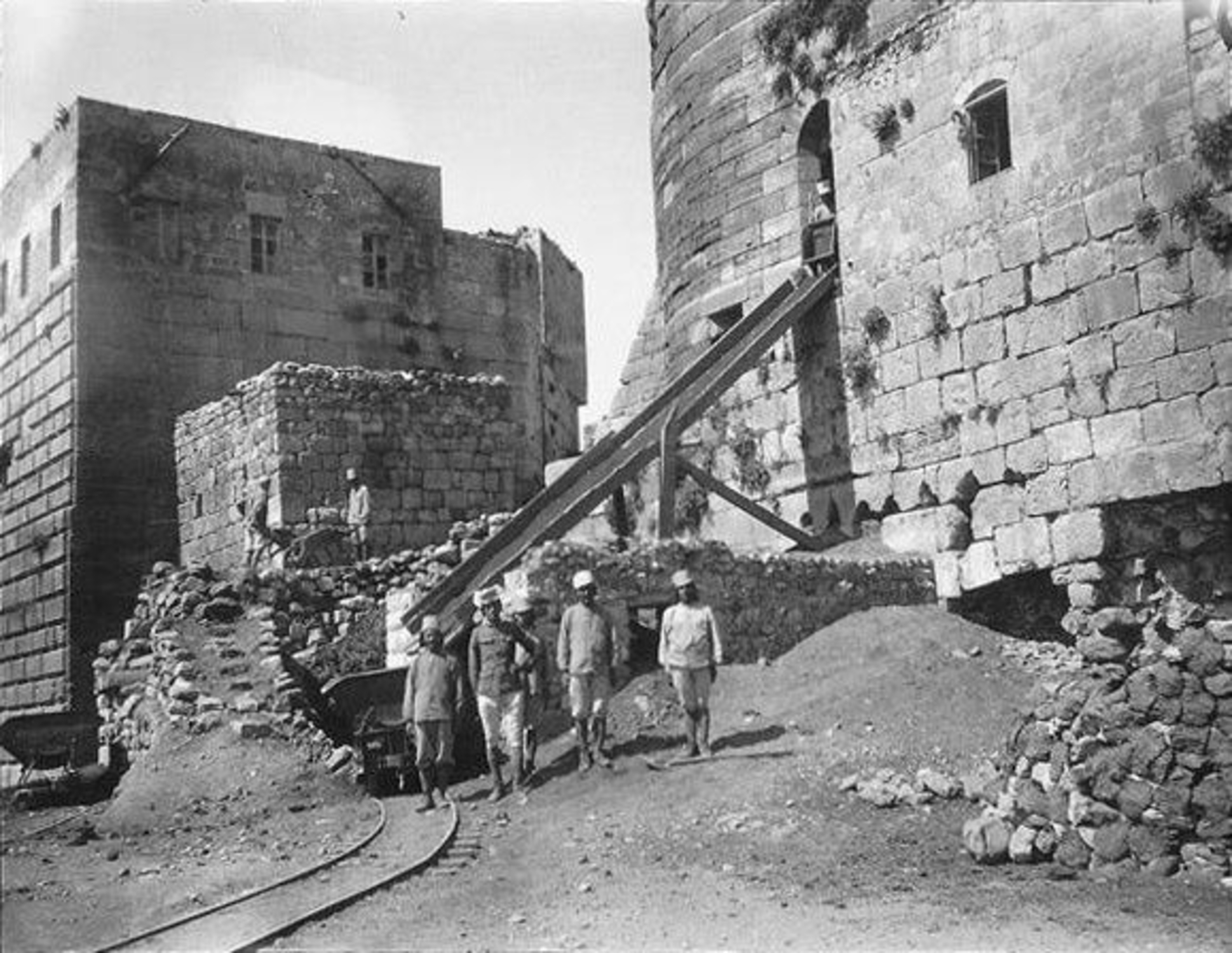
- Home
- Explore the site
- Rediscovery of the castle
- Paul Deschamps: inventor of the Krak
”I no longer have the strength to return to Syria. Its military architecture is yet to be studied. That will be your task” . With these words, Camille Enlart, a few days before his death, passed the torch to Paul Deschamps, who went on to study the Crusader fortifications in the Holy Land. Between 1927 and 1928, Deschamps, who worked as an archivist and curator at the Musée de Sculpture comparée (later the Musée des Monuments français), led several field missions accompanied by François Anus, an architect with the Service des Antiquités, and Captain Frédéric Lamblin of the 39th air company of the French Army of the Levant. The following year, in 1929, Deschamps returned to the Krak in the company of François Anus, who began restoring parts of the castle from 1930 onwards.
Deschamps is considered the true inventor of the site owing to the scale of his study and the depth of his archaeological analyses. He published these findings in 1934 in his masterly Château des croisés en terre sainte. Le Crac des chevaliers. Étude historique et archéologique.
In 1939, he published a second volume devoted to the Kingdom of Jerusalem. In 1974, more than forty years after his first mission, and a few months after his death, the third and last volume of his trilogy, devoted to the county of Tripoli and the principality of Antioch, appeared in print.


